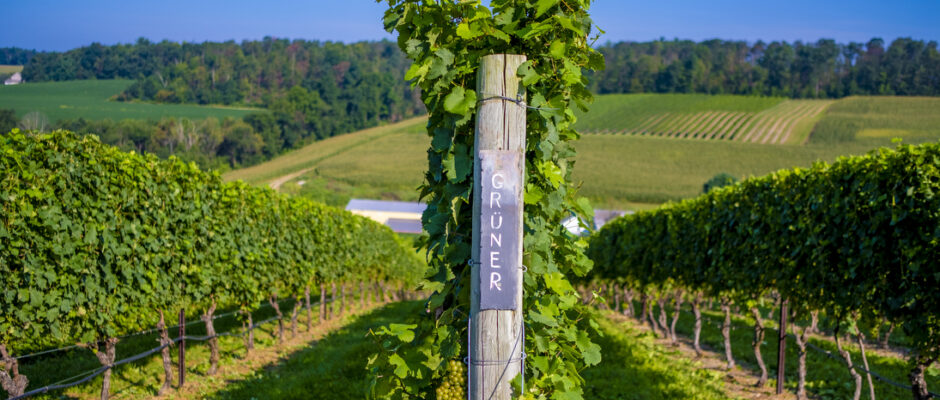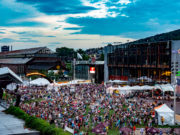“Obviously the more recognizable grapes — Pinot Grigio, Merlot or Riesling — are important varieties for us,” says Mario Mazza of Erie’s Mazza Vineyards. “But having some of these lesser known varieties is also important. For one, they are often well-suited to the growing conditions and climate. It’s also great to be able to offer consumers something a little bit less familiar.”
The Pennsylvania wine industry has exploded over the past 25 years, growing from around 50 wineries in 1995 to more than 270 today. Part of that growth has come from wineries embracing off-the-beaten-path grapes, better suited to the state’s specific terroir.
Though the Commonwealth has a storied wine history — it was home to the country’s first commercial winery — the influence of California wines on American palates has traditionally been a disadvantage in a state with cooler, wetter growing conditions. For a long time, grapes that thrive on the West Coast (Zinfandel, Syrah, Merlot) were THE varietals for American consumers. Even grapes that grow well on both coasts, such as Chardonnay, express themselves differently.
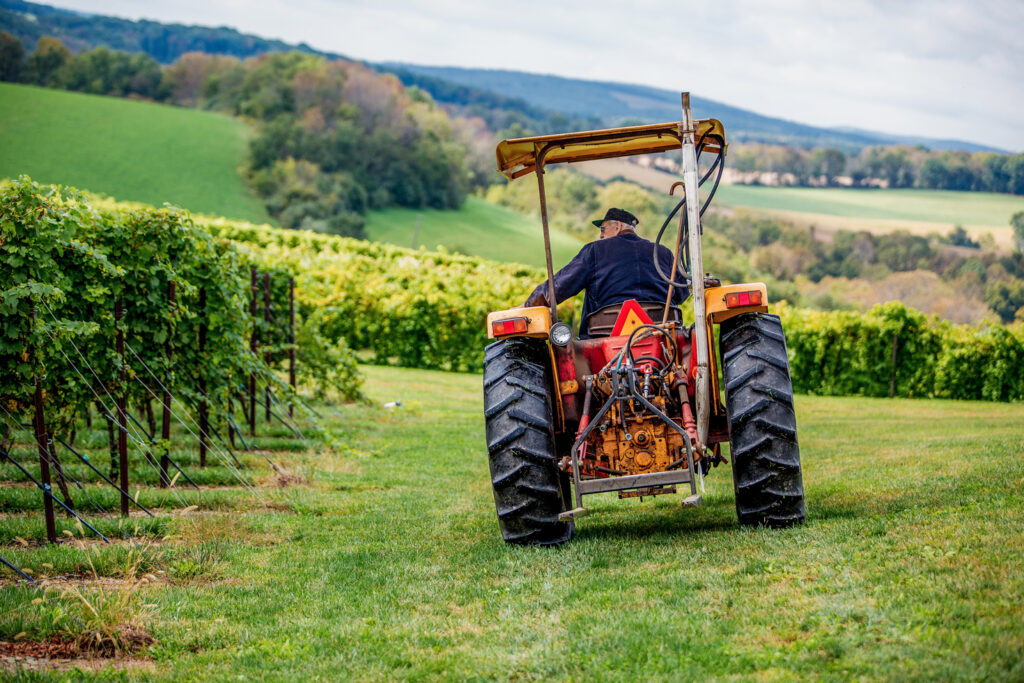
In fact, a Chardonnay grown in Pennsylvania might actually taste more like a Chardonnay grown in France. While many of the United States’ better-known wine regions are warmer and dryer, some of the most famous wine-producing areas in the world — such as France’s Loire Valley, Mosel in Germany and eastern Austria — look a lot like Pennsylvania when it comes to weather and soil. Celebrated grapes of those regions, such as Riesling and Cabernet Franc, have become flagship grapes of PA.
Thanks to that success, local winemakers are exploring other beloved grapes from cooler climates. Though these varieties have their own challenges (particularly when it comes to name recognition) they are easy to love. Fortunately, the growth of wine tourism — and the state’s proliferation of tasting rooms — provides low-risk environments in which to try them. Restaurants and sommeliers embracing local wine and steering customers towards something different are also on the rise.
The start of a new decade is the perfect time to become acquainted with these other grown-in-PA grapes.
Grüner Veltliner
Grüner Veltliner (GROO-ner velt-LEE-ner) is the most important grape of Austria. Though its propagation began in the 1950s, the variety’s international popularity has exploded over the past two decades.
Galen Glen Winery in Andreas, PA, is the state’s standard-bearer for Grüner. Winemaker Sarah Troxell was initially attracted to the wine’s food-friendly qualities.
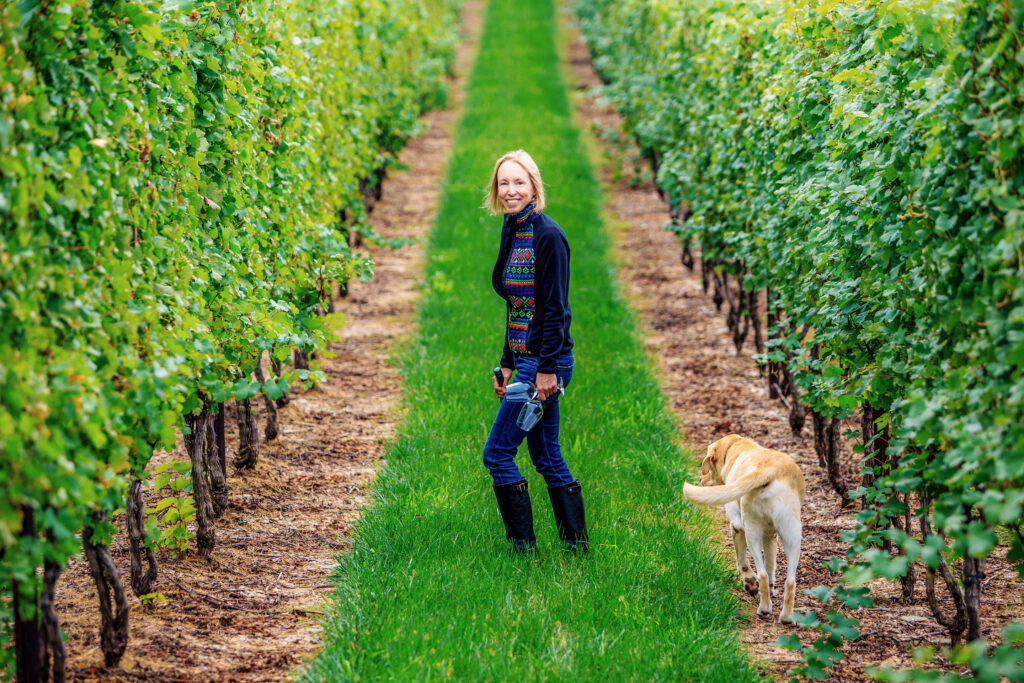
“I read an article about it in 2000,” she recalls. “[The story] had this amazing description of Grüner paired with asparagus. I’m a huge vegetable lover, so to hear about a wine that goes so well with them — but also a lot of other foods, including seafood, poultry and pork — was appealing. It struck me as something I really wanted to grow.”
The Troxells were the first people plant Grüner east of the Rockies (and second in the entire U.S.) when they did so in 2003.
“We weren’t even sure we were pronouncing it right,” recalls Troxell. “I didn’t know anything about the winemaking part, and of course Galen [her husband, the grower] didn’t know anything about the growing part. We had a lot of questions, but there was no one to ask. It was a pretty big gamble, but wine-growing in general is a gamble in a region like Pennsylvania.”
We had a lot of questions, but there was no one to ask. It was a pretty big gamble, but wine-growing in general is a gamble in a region like Pennsylvania.Sarah Troxell, Galen Glen Winery
Grüner Veltliner can produce a wide variety of white wines, from light and crisp to rich and full-bodied. In Pennsylvania, the best examples typically have a wonderful balance of luscious citrus and stone fruits, with bright acidity. There are also telltale herbal notes, as well as the grape’s signature white pepper aroma. Some winemakers like to describe the wine, to the uninitiated, as a marriage between Chardonnay and Sauvignon Blanc.
As for the comparison of Pennsylvania Grüner to European versions, Troxell says theirs “can be a little fatter than a typical Austrian [Grüner]… It’s vintage dependent, of course, but overall, because of our soil’s chemistry and differences in rainfall patterns, our wines have a slightly different mouthfeel.”
One of the most promising aspects of Grüner Veltliner is that it thrives across the state.
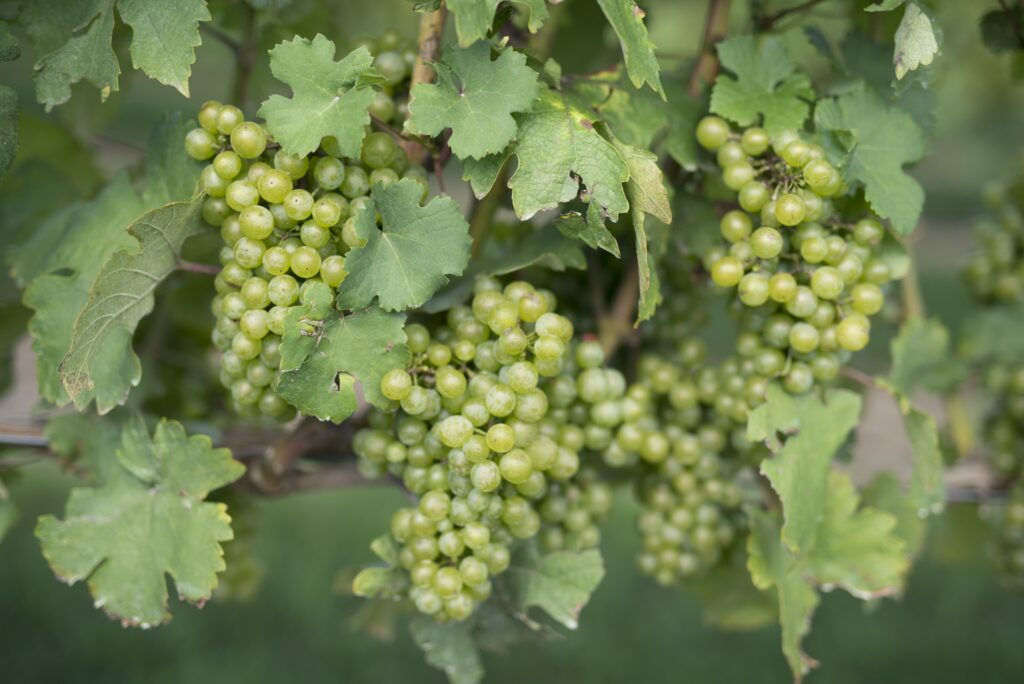
“It’s well suited to a number of the regions in PA,” explains Mazza, a second-generation winemaker; Mazza Vineyards has been making their award-winning South Shore Wine Company Grüner Veltliner since 2012. “It grows well up here along Lake Erie, and there is another grower in Central PA [Fero Vineyards] doing a wonderful job with it.”
West of Allentown, Stony Run Winery makes an outstanding example, and nearby Maple Springs Vineyard and Vynecrest Vineyard & Winery are both anticipating their first releases.
“It’s exciting,” adds Troxell. “All of our neighbors thought we were crazy and it was pretty much just a hunch that it could work here…[Grüner] is now planted in many parts of [Pennsylvania]. It has a lot of potential for this part of the U.S.”
Lemberger
On the red side, another stalwart of German and Austrian winemaking is Lemberger, also called Blaufränkisch. Thought to originate in South-central Germany, it’s now grown across central Europe, and known for its cold hardiness, consistent ripening and disease resistance — all music to a Pennsylvania winemaker’s ears.
The varietal first made its way to the U.S. via Washington State, where it was introduced in the late ’60s and considered a top candidate to become the state’s signature grape. Though Syrah would eventually take over much of Lemberger’s plantings in the northwest, a trip to Seattle in the mid-’90s inspired John Landis, co-founder and winemaker at Vynecrest, to plant the grape in Lehigh County.
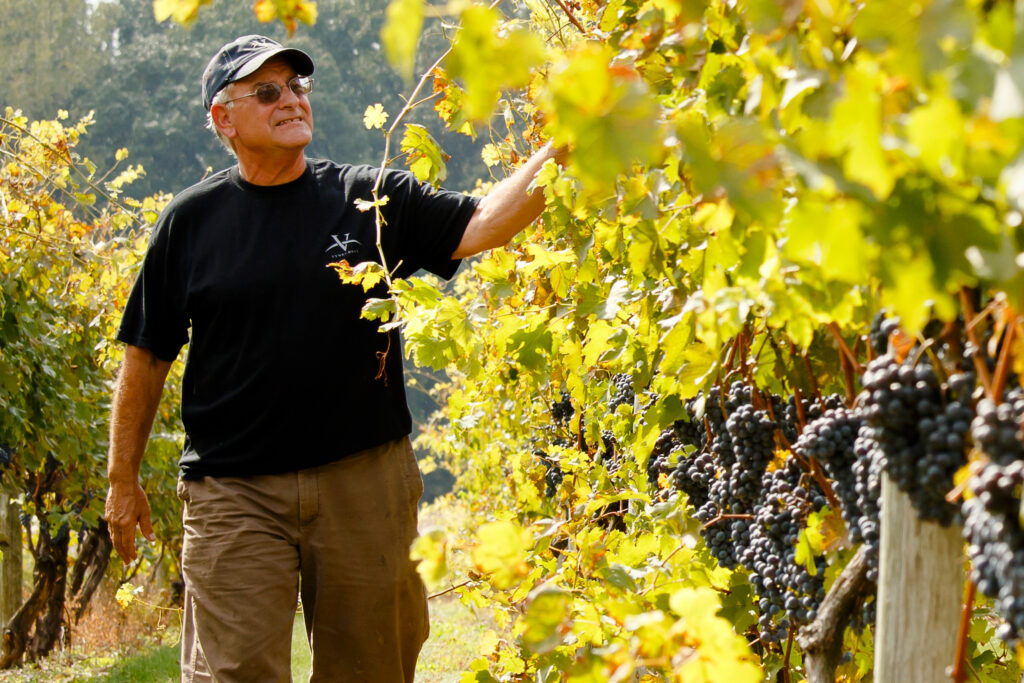
Since then, it’s become a regular cultivar in Erie (and the nearby Finger Lakes) with wineries like Mazza. The team at Fero Vineyards in the Susquehanna Valley also chose Lemberger when first planting their vineyard about a decade ago.
“Most of our grapes had similar latitudes in Europe,” recalls Nick Kifolo, Fero’s head of marketing and distribution. “Same growing season, sunlight time, sunlight days. It’s also where the ancestry of [people in] this region is from, which added into it as well.”
In Europe, Lemberger is best known as a light-to-medium bodied red, but in Pennsylvania it is often considered for bolder wines. On its own, the grape exudes big flavors of black cherry and berry, as well as a signature black pepper note.
It’s great to be able to offer consumers something a little bit less familiar.Mario Mazza, Mazza Vineyards
Lemberger’s biggest success locally has been as a foil to Pinot Noir; in a blend, the latter can smooth out the former’s rough edges, creating a crowd-pleasing, mid-weight wine. This also helps with the grape’s branding problem. Lemberger, though certainly far easier for Americans to pronounce than Blaufränkisch, is often confused with Limberger, the ignominiously pungent cheese. Once blended, however, the wine can take on a name that avoids the issue altogether. At Vynecrest, that’s the # blend, named for the vintage it represents (#38 for 2015, #39 for 2016, etc.). At Fero, it’s “1812,” the year owner Chuck Zaleski’s family started farming in Lewisburg.
Albariño
With all this talk of cooler-climate grapes, it might seem odd to bring up Spain. But Albariño hails from the northwest region of Galicia; its maritime climate is far different from the rest of the country. (The grape is also quite popular in nearby Portugal, where it’s called Alvarinho.)
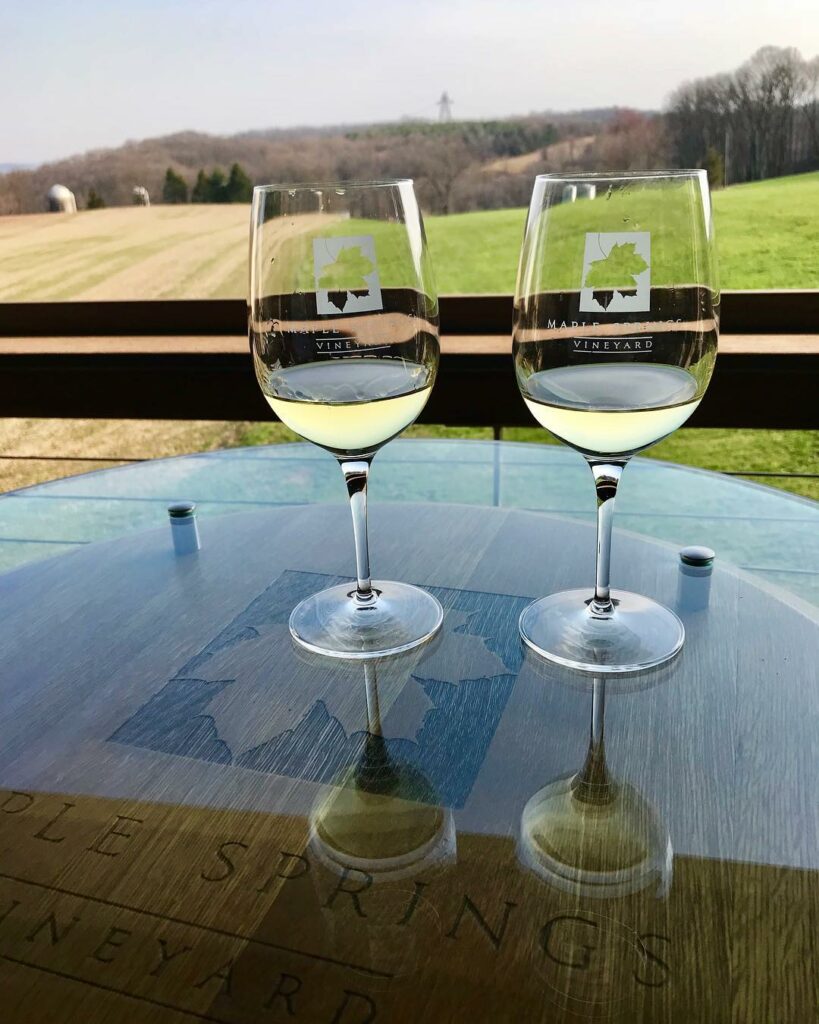
“Galicia is coastal, and a little bit mountainous,” says Jef Stebben, the winemaker at Maple Springs Vineyard in Bechtelsville, Berks County, which has won several awards for its lovely Albariño. “There are steep hillsides and a lot of granite in the soil. It gets pretty darn cold because it’s in the north of Spain, but it has relatively high humidity. Those are a lot of things we also have at our vineyards here.”
In its native land, Albariño is mostly known as a fresh, light white with searing acidity that pairs well with seafood and summertime. In Pennsylvania, the wines tend to be lusher, showing more of the grape’s telltale stone-fruit aromas.
Larry Kennel, the winemaker at Grandview Vineyard in Mount Joy, Lancaster County, leaves his grapes on the vines until he knows he’ll get that ripe peach note in the final wine. The result is something that doesn’t necessarily recall the typical Iberian Albariño profile, but it’s tasty nonetheless.
To balance this effect, Maple Springs is doing what it can to encourage big aromatics. Techniques like cold fermentation in 100% stainless steel, avoiding malolactic fermentation (the process that makes wines like Chardonnay taste buttery), and choosing yeasts that accent the aroma help produce a clean, fresh wine.
“The physiology of the grape seems to have adapted well to our site,” adds Stebben. “We’ve been really happy with it.”
What’s Next?
Though these grapes are just beginning to make inroads in the market, most have been around for a while, even in PA. It makes one wonder which overlooked varieties will be the stars of tomorrow. There are a few possibilities.
Saperavi is an ancient Georgian grape with a distinct prune note that’s shown promise in the Finger Lakes. Fero’s iteration — the only in PA, so far — won “Best Red” honors at the 2019 PA Sommelier Judgement.
Mazza has taken a shine to Teroldego, a food-friendly Italian red from the mountainous Trentino region, despite the fact that it’s grown sparsely elsewhere in Italy or abroad.
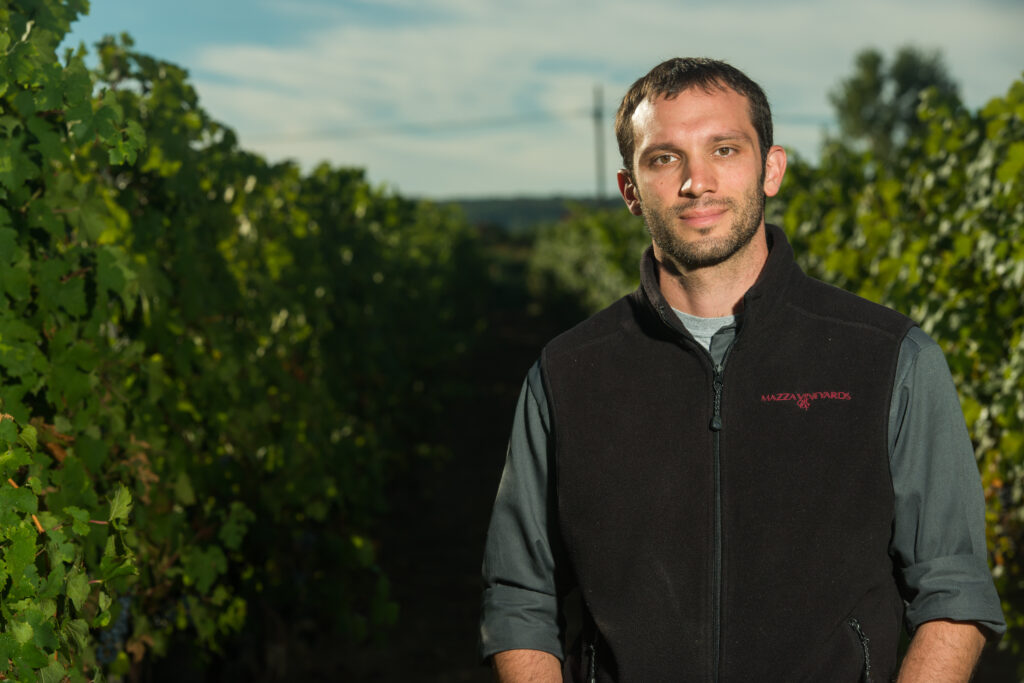
Chester County’s Wayvine Winery & Vineyard is placing big bets on Carmine, a cross between French grapes Cabernet Sauvignon, Merlot and Carignan. Wayvine’s James Wilson loves how a grape they originally planted by accident — and referred to fondly as “mystery wine” — can produce a hearty, full-bodied red in a cooler climate.
Cabernet Dorsa is the lead grape in Galen Glen’s Three German Bastards red blend. This cross between Lemberger and Dornfelder (another German variety) features spicy blueberry notes and smooth tannins.
“I’m often asked what I think is next,” says Galen Glen’s Troxell. “Honestly, I don’t know…Our daughter Erin — who’s the next generation to take over our farm and stewardship of our land — is looking at some unusual varieties from her contacts in Europe, so maybe we’ll try something new and interesting in the future!”
MIKE MADAIO recently published Lost Mount Penn: Wineries, Railroads and Resorts of Reading, which delves into the forgotten wine house culture of Berks County in the 1800s. He also manages Pennsylvania Vine Company, a website focused on high quality dry wines made in PA. Mike can be found on social media @lifeattable.
*Keystone Edge editor Lee Stabert writes content for the Pennsylvania Winery Association.
